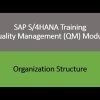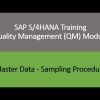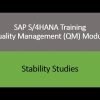This video explains the concept of Recurring Inspection in the SAP S/4HANA Quality Management (QM) module. Here are the key points:
- Recurring Inspection: The video explains that recurring inspection allows you to monitor the quality of the batches that are in the warehouse. The system can automatically create inspection lots at predefined intervals for selected batch materials. This process is typically used in process manufacturing industries like pharmaceuticals, food manufacturing, and chemical industries.
- Inspection Intervals: The video demonstrates how to define inspection intervals in the Quality Management view of the Material Master. These intervals specify when the recurring inspections should take place, such as after every six months or after every one year.
- Inspection Type: The video emphasizes that an inspection type is active for inspection lot origin 09 in inspection settings of the Material Master record. This inspection type is mandatory for recurring inspection.
- Inspection Task List: The video mentions that an inspection task list or inspection plan is required for recurring inspection. The video shows an example of an inspection plan with one operation and one MIC (Measurement Inspection Characteristic).
- Shelf Life Expiry (SLED): The video discusses the concept of Shelf Life Expiry, where after a certain date, the material can no longer be used. This date is maintained in the Material Master. Once this date is reached, the system will move the stock to the blocked stock so that it cannot be consumed.
- Triggering Inspection Process Flow: The video explains how recurring inspections are triggered by a report that can be executed manually or that the system can execute automatically. To generate the recurring inspection lot, a program needs to be run, which can be executed manually or automatically by a background job.









































